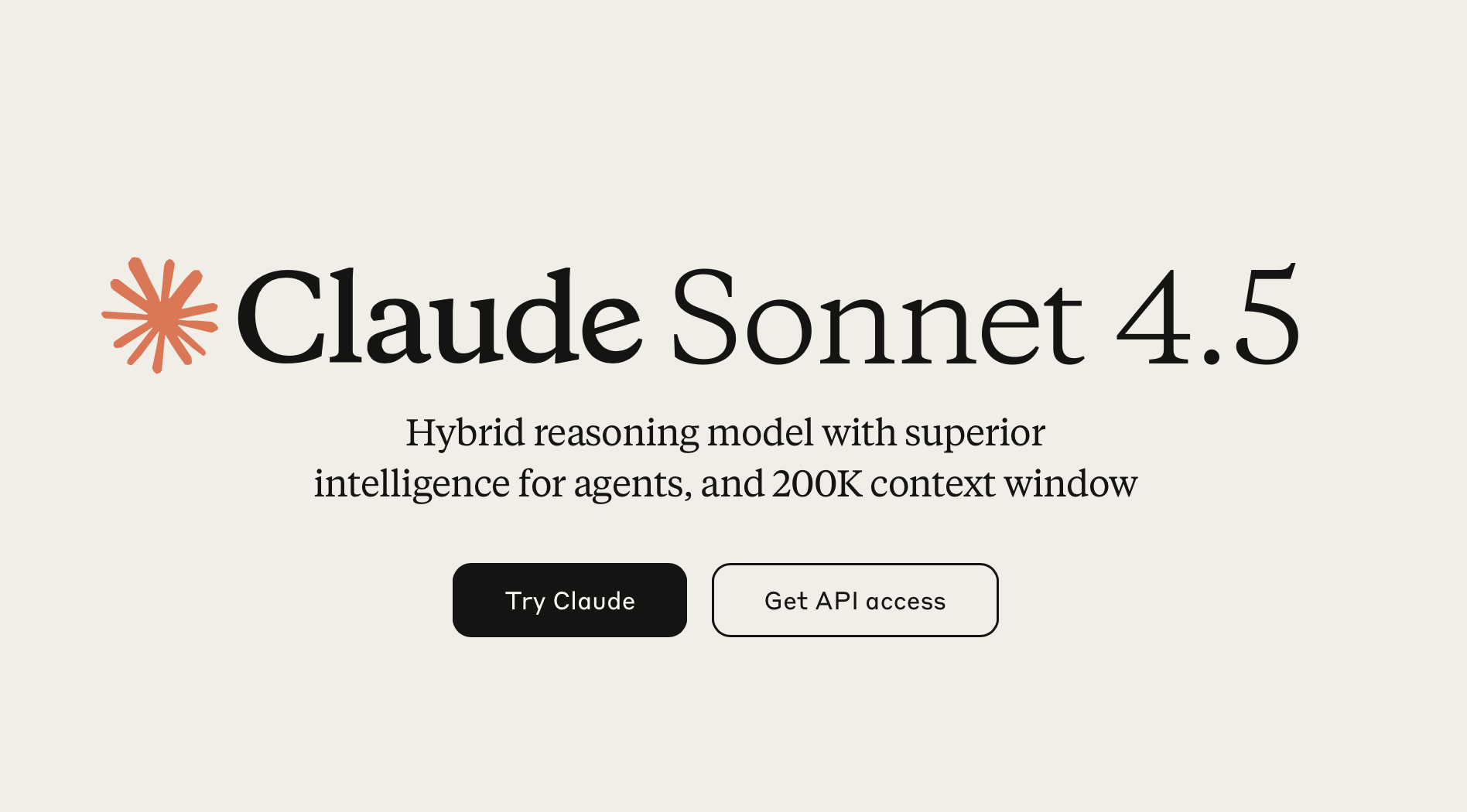Claude Sonnet 4.5: When the “Efficient” Model Becomes the Smart One
Claude Sonnet 4.5 just launched, and Anthropic did something unusual with this release—they made their fastest model their smartest one too.
The new Claude Sonnet 4.5 flips the traditional AI model hierarchy on its head. Usually, you’re forced to choose: do you want the brilliant-but-slow model, or the quick-but-decent one? With Claude Sonnet 4.5, Anthropic eliminated that trade-off entirely.
What Actually Changed in Claude Sonnet 4.5
I’ve been testing Claude Sonnet 4.5 since launch, and the improvements show up in subtle but meaningful ways. This isn’t about flashy new features—it’s about reducing those frustrating AI moments we’ve all experienced.
You know that thing where you give an AI a complex instruction and it sort of gets it? Then you spend time rephrasing until it finally clicks? Claude Sonnet 4.5 reduces those friction points significantly. The model picks up on nuance better and maintains context through longer conversations without losing the thread.
For coding tasks, Claude Sonnet 4.5 demonstrates noticeably better understanding of what you’re actually trying to build versus what you literally typed. You get fewer “technically correct but completely missing the point” responses that waste your time.
Why Claude Sonnet 4.5 Matters for Your Workflow
Here’s the reality about AI models: the best one is the one you actually use consistently. Previous versions of Opus might’ve been more capable on paper, but if you were defaulting to Sonnet for speed and cost efficiency, you were working with a less powerful tool.
By making Claude Sonnet 4.5 the top performer in their lineup, Anthropic made their best model the one people will naturally choose. That’s smart product strategy that benefits users directly.
Claude Sonnet 4.5 for Developers
If you’re building applications with Claude’s API, Claude Sonnet 4.5 changes your technical decisions. You can now access top-tier AI performance without the latency or cost penalties that typically come with flagship models.
The model string for API access is claude-sonnet-4-5-20250929. For anyone using Claude Code (Anthropic’s terminal tool for developers), you’re getting the Claude Sonnet 4.5 upgrade automatically—your AI coding assistant just became significantly more capable.
Testing Claude Sonnet 4.5: Real-World Performance
The practical test for any AI model isn’t benchmarks—it’s whether you notice yourself hitting fewer roadblocks during actual work. After extended testing, Claude Sonnet 4.5 passes that test.
The model handles edge cases better, understands implicit requirements more reliably, and generates more useful first-draft outputs. These improvements compound over dozens of interactions throughout your day.
Should You Switch to Claude Sonnet 4.5?
If you’re already using Claude in your workflow, updating to Claude Sonnet 4.5 is a no-brainer. The performance gains are immediate and the model is available now through the same interfaces you’re already using.
If you haven’t tried Claude yet, Claude Sonnet 4.5 represents the strongest argument for reconsidering. The gap between “fast and good enough” versus “slow but powerful” has effectively disappeared.
The Bottom Line on Claude Sonnet 4.5
Anthropic transformed their workhorse model into their racehorse. Claude Sonnet 4.5 delivers flagship-level intelligence at practical speeds, which changes how you can integrate AI into daily workflows without compromise.
Is Claude Sonnet 4.5 revolutionary? No—AI models improve incrementally, and that’s the expected pattern. But it’s a meaningful step forward that matters for real-world usage rather than just benchmark scores.
Worth trying if you’re in the Claude ecosystem. Worth evaluating seriously if you’re currently using competing AI models.
Anthropic just did something interesting with their latest release, they made their fastest model their smartest one too.
Claude Sonnet 4.5 dropped today, and it’s flipping the usual AI model hierarchy on its head. Typically, you pick: do you want the brilliant-but-slow model, or the quick-but-decent one? Anthropic said “why choose?” and made Sonnet 4.5 outperform their previous flagship, Opus, while keeping the speed.
What Actually Changed
I’ve been testing it for a few hours now, and the difference shows up in subtle ways. It’s not about flashy new features, it’s about fewer frustrating moments.
You know that thing where you give an AI a complex instruction and it… sort of gets it? Then you rephrase three times until it clicks? That happens less now. Sonnet 4.5 picks up on nuance better. It maintains context through longer conversations without losing the thread.
For coding, it’s noticeably better at understanding what you’re actually trying to build versus what you literally typed. Less “technically correct but completely missing the point” responses.
Why This Matters
Here’s the thing about AI models: the best one is the one you actually use. Opus might’ve been more capable, but if you’re reaching for Sonnet because it’s faster and cheaper, you’re working with Sonnet.
By making Sonnet the top performer, Anthropic made their best model the one people will default to. That’s smart product design.
The Developer Angle
If you’re building with Claude’s API, this changes your calculus. You can now get top-tier performance without the latency or cost trade-offs. The model string is claude-sonnet-4-5-20250929 if you want to test it.
For anyone using Claude Code (their terminal tool), you’re getting this upgrade automatically. Your AI coding assistant just got meaningfully smarter without you doing anything.
Reality Check
Is this revolutionary? No. AI models get better, that’s the pattern. But it’s a solid step forward that actually matters for daily use.
The real test isn’t benchmarks, it’s whether you notice yourself getting frustrated less often. So far, that’s checking out.
Worth trying if you’re already in the Claude ecosystem. Worth considering if you’re not.
The Bottom Line: Anthropic made their workhorse model into their racehorse. If you use Claude regularly, update and see if you notice the difference. If you don’t use Claude yet, this might be the version that makes you reconsider.



